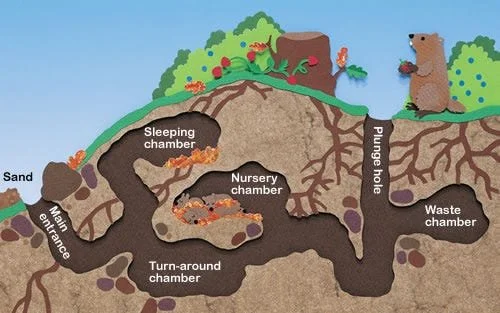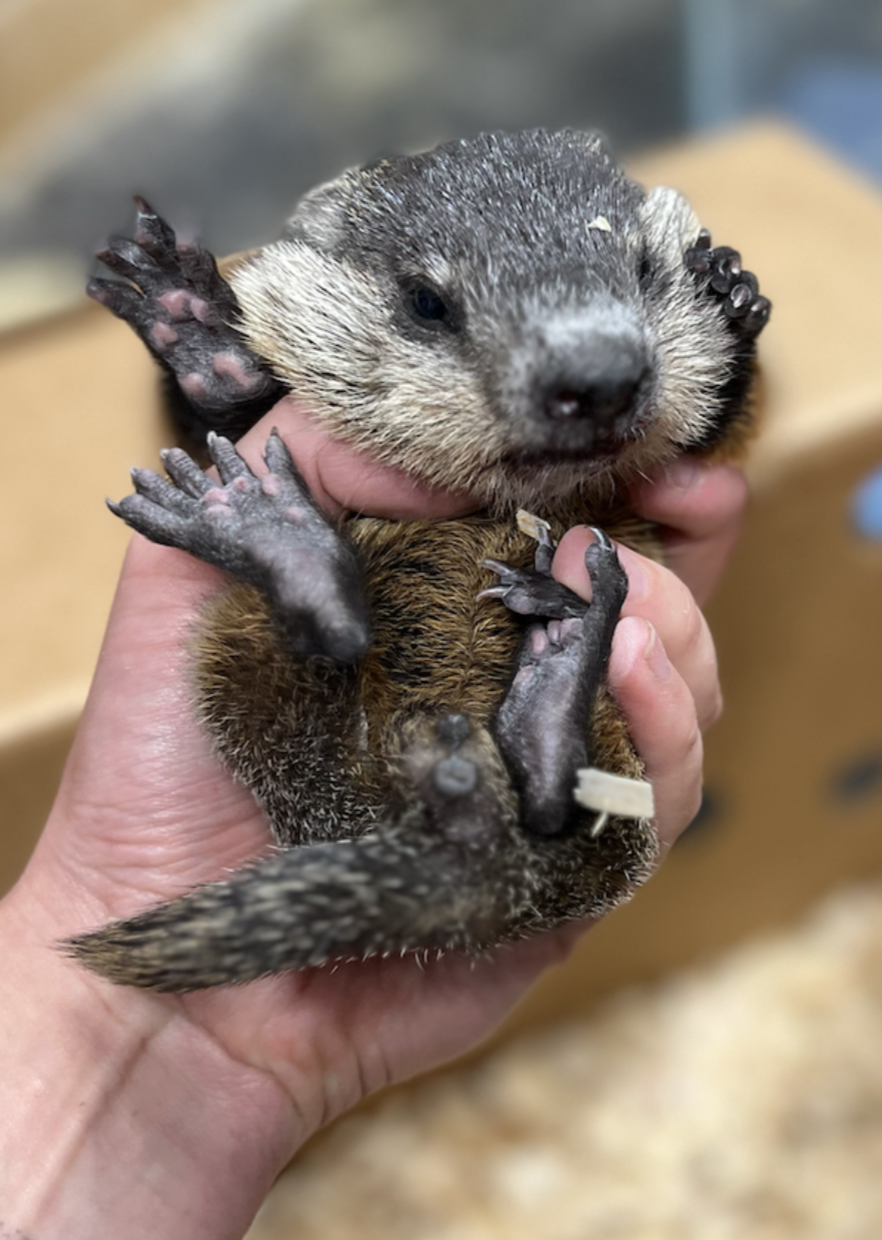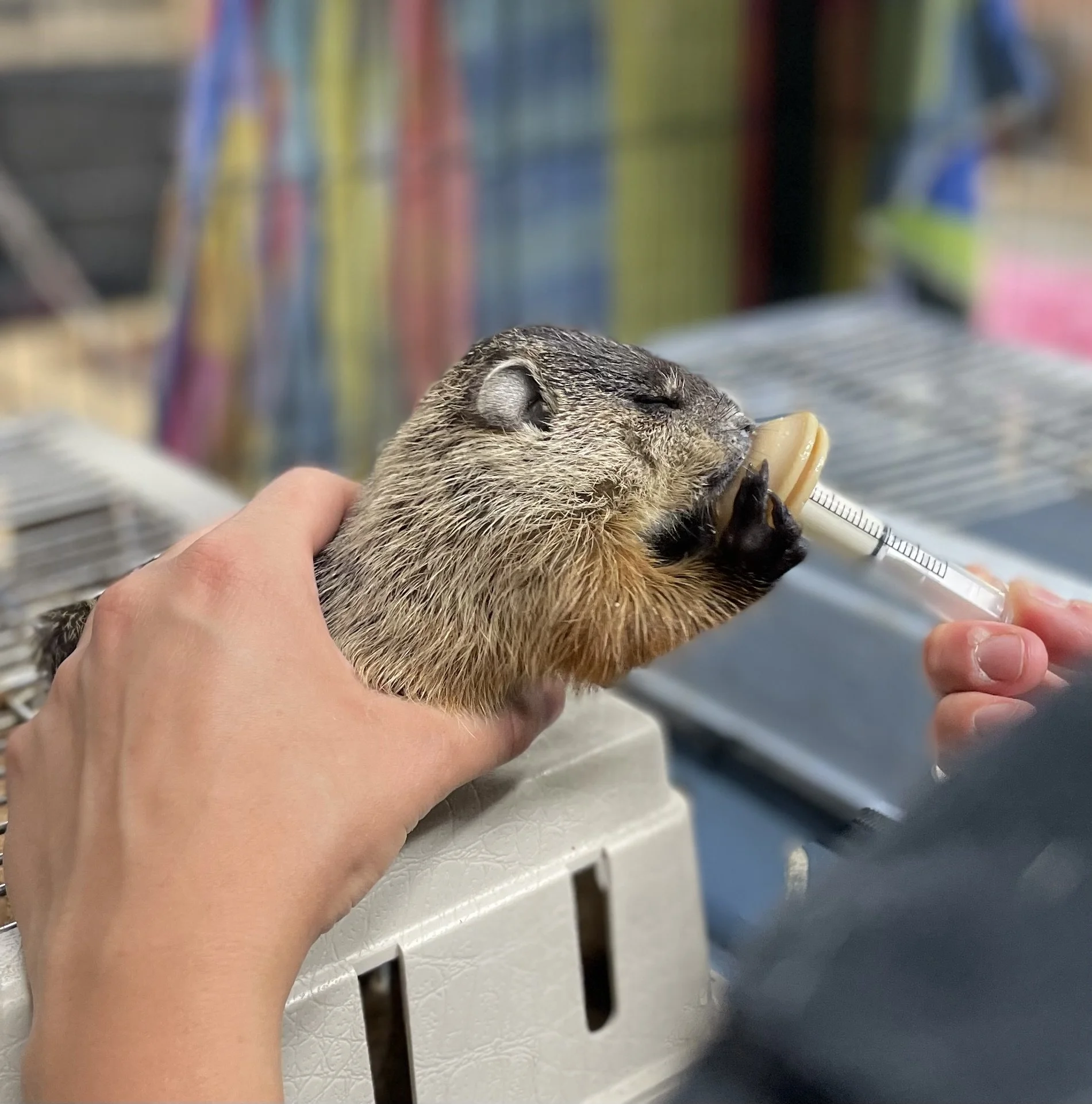Groundhog Coexistence & Protection Guide
Click here to download a PDF of this guide!
Why Groundhogs Should Be Protected
Groundhogs are native, ecologically important animals who play a vital role in our local ecosystems. They are shy, intelligent, sensitive prey animals who create complex burrows with separate chambers for sleeping, rearing young, and protection. These burrows also provide shelter for other animals like foxes, rabbits, and even owls after the groundhogs leave. Groundhogs are a natural food source for larger predators such as foxes, hawks, and coyotes.
Removing them disrupts this natural balance and creates issues, both for wildlife and for humans.
Why Trapping & Relocation Is Illegal, Inhumane, and Ineffective
Trapping & Relocation Is Illegal in NY State
It is illegal to relocate groundhogs.
Only licensed trappers with the DEC (Department of Environmental Conservation) are legally allowed to trap groundhogs.
Licensed trappers often kill them by drowning or gassing. It is also illegal for them to trap or kill groundhogs during and shortly after they give birth.
Unlicensed trapping can result in serious fines if reported to the DEC.
Why Trapping Doesn’t Work
Trapping doesn’t solve the problem. It creates an open vacancy for another groundhog (or sometimes skunks) to move in. Wildlife trappers often exploit this cycle, charging hundreds per animal, knowing full well that removal only leads to repeat business.
Why It’s Inhumane
Groundhogs are deeply attached to their burrows, which have detailed chambers to provide protection, food access, and shelter for their young.
Relocated groundhogs go into full panic mode, often starving or becoming easy prey due to lack of shelter and familiar terrain.
Orphaned pups left behind will starve to death slowly, hidden underground.
They are brilliant and shy sentient beings just trying to survive.
What You CAN Do Instead
Responsible Land Sharing
Coexisting is not only the humane choice — it's the effective one.
Andres and I share our land with a large family of groundhogs. We have a 30x30 ft garden and have never had a groundhog enter because we took the time to properly fence everything in.
Fence in Your Garden!
Add a hardware cloth extending 1-2 feet at the bottom of our garden to to prevent digging.
Add a wobbly L-shaped skirt made of chicken wire around the top of your fence to create an unstable climbing surface.
Use Scare Devices Groundhogs are cautious animals.
Hang beach balls or shiny objects that move in the wind.
Place pinwheels throughout the garden.
Change locations often to keep them effective.
Humane Eviction (Mid-July to Late September)
Never evict in spring — mothers have dependent young. Wait until mid-to-late summer for humane eviction.
Step-by-Step: Humane Eviction
Check for Occupancy:
Plug burrow entrances with grass or newspaper.
Wait 3–5 days. If undisturbed, it's likely unoccupied.
If Occupied: Humane Harassment:
Partially dig out the entrance.
Clear vegetation around it.
Add strong-smelling substances AROUND the entrance (NOT inside!):
Urine-saturated kitty litter
Pine-Sol
Capsaicin-based repellents
Monitor to ensure the animal leaves.
Seal the Burrow
ONLY IF YOU ARE POSITIVE THEY ARE NO LONGER THERE
Use 3'x3' sections of welded fencing (max 3" openings).
Bury at least 1 foot deep and secure with landscape staples.
This prevents re-entry or reuse of the burrow.
Continue Monitoring:
Watch for new burrows.
Repeat the process as needed.
The Bottom Line: Coexistence is Key
We share this land with groundhogs and all native wildlife. Removal methods like trapping are not only illegal and unethical, but they don’t work.
Instead, use simple solutions like fencing, deterrents, and timed, humane evictions to live peacefully with the species that belong here.
Thank you for reading this far. Below are photos of baby groundhogs we’ve personally rescued and rehabilitated. They are intelligent, emotional creatures — not pests.
Let’s choose compassion and coexistence. Let’s set an example for how humans can live with nature, not against it.






